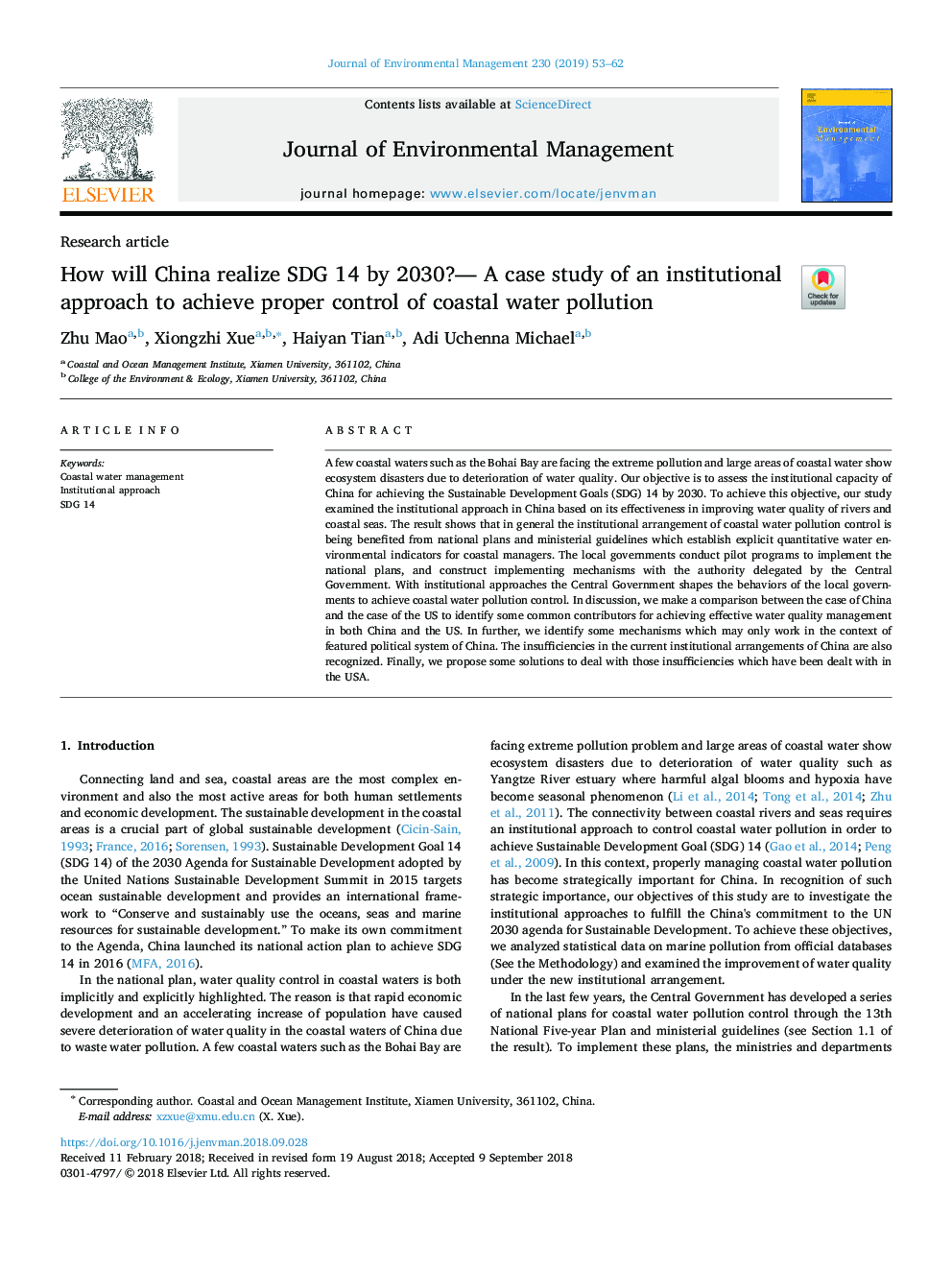| Article ID | Journal | Published Year | Pages | File Type |
|---|---|---|---|---|
| 10226953 | Journal of Environmental Management | 2019 | 10 Pages |
Abstract
A few coastal waters such as the Bohai Bay are facing the extreme pollution and large areas of coastal water show ecosystem disasters due to deterioration of water quality. Our objective is to assess the institutional capacity of China for achieving the Sustainable Development Goals (SDG) 14 by 2030. To achieve this objective, our study examined the institutional approach in China based on its effectiveness in improving water quality of rivers and coastal seas. The result shows that in general the institutional arrangement of coastal water pollution control is being benefited from national plans and ministerial guidelines which establish explicit quantitative water environmental indicators for coastal managers. The local governments conduct pilot programs to implement the national plans, and construct implementing mechanisms with the authority delegated by the Central Government. With institutional approaches the Central Government shapes the behaviors of the local governments to achieve coastal water pollution control. In discussion, we make a comparison between the case of China and the case of the US to identify some common contributors for achieving effective water quality management in both China and the US. In further, we identify some mechanisms which may only work in the context of featured political system of China. The insufficiencies in the current institutional arrangements of China are also recognized. Finally, we propose some solutions to deal with those insufficiencies which have been dealt with in the USA.
Related Topics
Physical Sciences and Engineering
Energy
Renewable Energy, Sustainability and the Environment
Authors
Zhu Mao, Xiongzhi Xue, Haiyan Tian, Adi Uchenna Michael,
